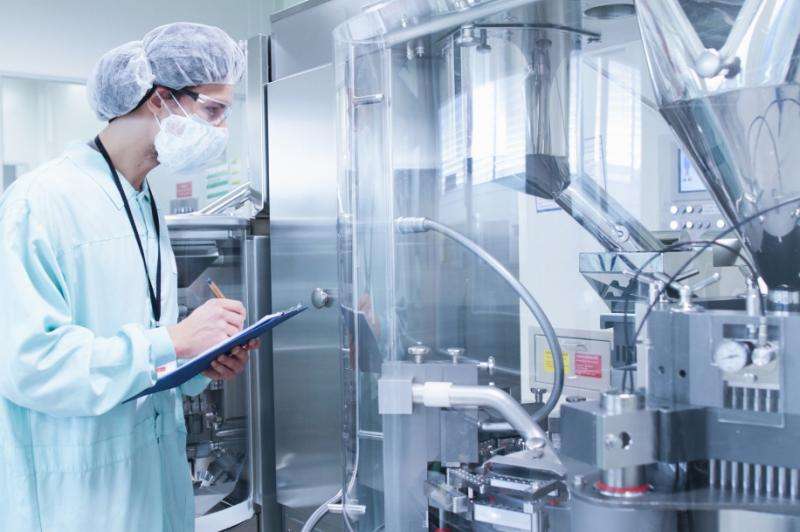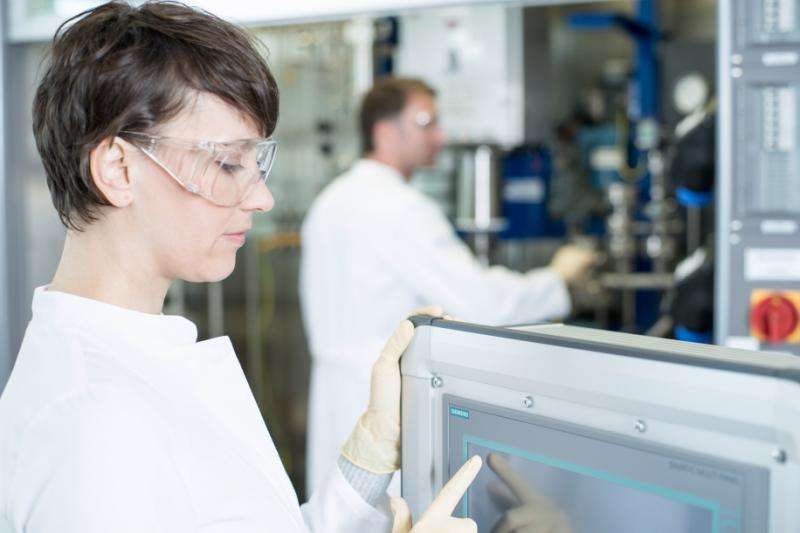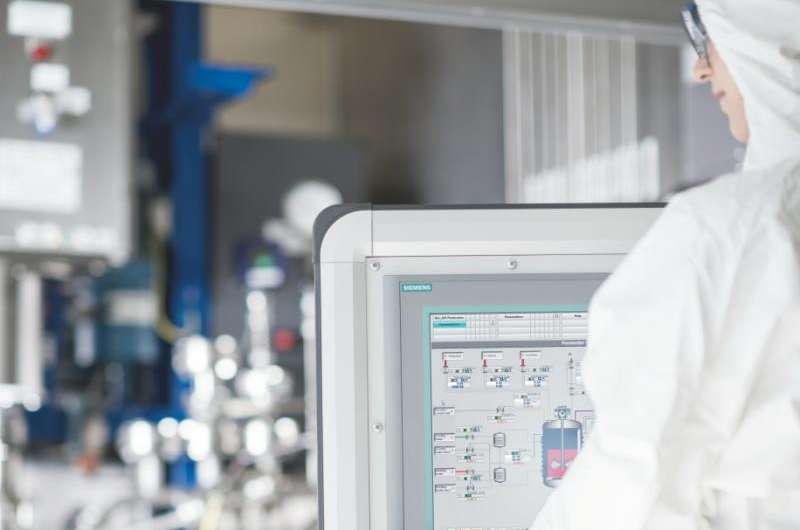Turbocharging drug development and production with less paperwork

Pharmaceutical manufacturing is governed by strict guidelines that necessitate extensive documentation of all steps in the production process. A new Siemens solution for "paperless pharma production" significantly boosts efficiency – making it easier to introduce personalized cancer therapies, for example.
Pharmaceutical products must be produced with perfection in mind. The slightest deviation from any production specification can quickly jeopardize the health and lives of human beings. So it's no wonder that regulatory authorities like the United States Food and Drug Administration (FDA) and its European counterpart, the European Medicines Agency (EMA), keep a very sharp eye on manufacturers. Pharmaceutical companies must therefore document in painstaking detail that they have followed all regulations, from raw materials and how they are processed all the way to product storage and transport.
In practice, this means that multiple staff members must monitor production – inspecting, recording, and extensively documenting all process steps. This "batch record" is a kind of biography of the batch and can fill up to 500 paper pages, depending on the medication – so it contains a whole lot of information. "In simplified terms, pharmaceutical production is like baking a cake," explains Andrew Whytock of Siemens Vertical Sales Pharma. "Every medication has its own recipe that lists the ingredients and production steps down to the last detail – except that, unlike in the kitchen, each recipe is as long as several cookbooks."
This recipe includes not only the properties of precursor materials but also the subtleties of how they are processed – the quantities, the ambient conditions, and exactly how they have to be mixed or fermented. "Employees always have to study the detailed specifications in the batch record and then sign their names to confirm that everything was carried out within the specified parameters," notes Whytock. "That makes it possible down the road to check which employee used which machine to weigh the precursors, for example. This information allows the authorities to track the exact path a batch took during production, should that become necessary."
Higher Quality with Less Paper

Given the huge selection of medications and the wide variety of preparations – such as the distinct dosages prescribed for children and adults, pharmaceutical companies face a barrage of complex documentation requirements. At the same time, the industry is affected by ever-increasing price pressures, thus constantly pushing it to demand greater efficiency in production processes. With this in mind, Siemens has introduced a solution that can greatly alleviate this dilemma: "Paperless pharma production" significantly reduces documentation costs while complying with strict regulatory guidelines.
The basic idea is that, rather than recording all data manually on paper, staff can write entries directly to a database. Many information from production processes can even be automatically stored in an electronic batch record (eBR). This system also gives employees precise instructions for all workflows and process steps and can even control individual workflows without any human support. All production information is stored in a master batch record (MBR). The MBR works like a flowchart – plotting every production step with its specified underlying conditions and all conceivable branches that may occur during the production process – guiding employees through the process like a navigation system. "You don't need to be a real IT expert to create an MBR," says Whytock. "It can sometimes be almost as simple as working with a Word document."
Integrating MES and Process Control
Paperless pharmaceutical production relies on the integration of various IT systems. For instance, the Manufacturing Execution System (MES) from Siemens, Simatic IT eBR, can communicate directly with a process control system, which, in turn, monitors the production steps and constantly records large volumes of sensor readings and other data. The smoothest integration is achieved with the Siemens Simatic PCS 7 process control system, but third-party products can also be configured to feed data into an eBR. SIMATIC IT eBR collects data through direct integration into the PCS 7 automation system. This allows a standardized data exchange of real-time process data with the MES.
The new Siemens solution is already being deployed by pharmaceutical companies in Europe, Asia, and the United States. It not only dramatically shrinks paper, it also cuts down on personnel costs – in some cases, a single employee can now handle the monitoring and documentation that used to keep several people busy. What's more, all of this leads to much higher process quality. Software automatically detects any deviations during production and notes it in the eBR. This "review by exception" identifies problems much earlier than before, avoiding unnecessary costs. "Without paperless pharma production, it might take days before an error is noticed," says Whytock. "By that time, production is much further along, and in the worst-case scenario, an entire batch may have to be destroyed. Review by exception ensures that this can no longer happen, keeping costs down in the process."
Paperless Production Facility for New Cancer Medications

Paperless pharma production not only delivers a turbo-charged efficiency boost for the production of conventional medications – it's also a prerequisite for realizing one of the greatest hopes in cancer treatment – personalized medications and individualized tumor therapies. In addition, it opens the door to production of such patient-specific medications based on implementation of the same meticulous documentation standards as are applied to the production of mass-produced medications.
In Mainz, Germany, biotech company BioNTech is developing personalized cancer therapies (IVAC MUTANOME) along these lines. The therapies stimulate the immune system to effectively fight a patient's cancer. Siemens and BioNTech have signed a strategic partnership agreement to help bring this type of customized therapy to market as quickly as possible after production.
The goal is a fully automated, digitized production facility for the fast, affordable, reliable manufacture of individualized BioNTech cancer vaccines starting in late 2016. Clinical studies are still in progress – but with the help of paperless pharma productions, they could go into large-scale market production after their approval and begin saving lives.
Provided by Siemens




















